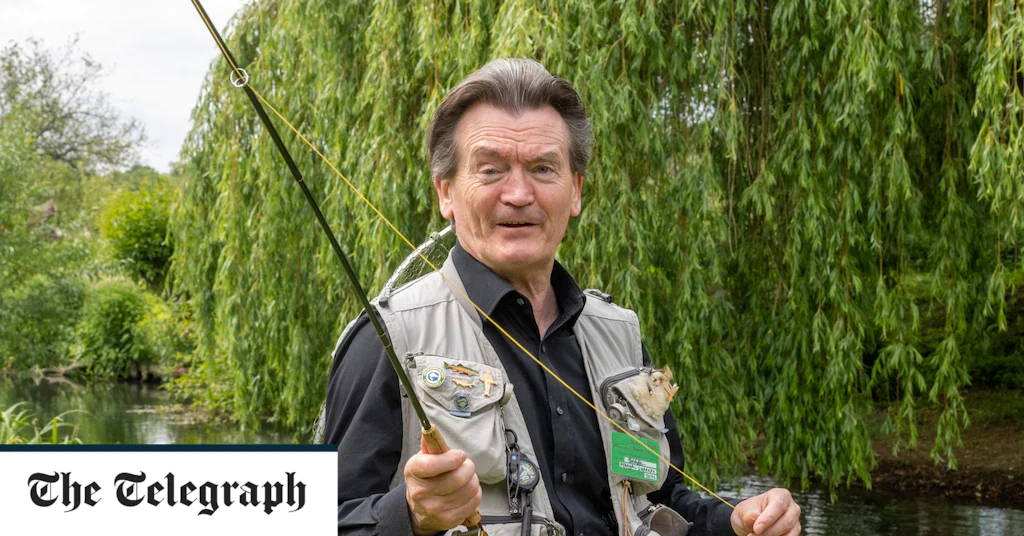Flylords/Courtesy Photo
Just north of Hayden, California Park is home to more native plants and animals than anywhere else in the Medicine Bow-Routt National Forest.
The high-elevation, sagebrush-dominated landscape has a rich history of settlements before and after Europeans made their way to the Yampa Valley, and the area has been used for grazing for more than a century.
That grazing, coupled with a variety of other land uses and naturally erosive soils in the area, has led to the degradation of that unique habitat, particularly by separating First Creek from its floodplain.
The U.S. Forest Service has been working to repair habitat in the area for at least three decades, and in August and September, the Forest Service, Trout Unlimited and a wide variety of partners finished another project to restore three miles of stream, more than seven acres of riparian habitat and 1.5 acres of wetlands.
“The stream beds get lowered through time,” said Rick Henderson, south zone fish biologist for the forest. “You take away the vegetation, you get all that use on the land and the streams drop.”
In the spring when streams are burgeoning with runoff, instead of flowing through the floodplain naturally, the raging water ends up cutting the channel deeper into the land. This erodes the banks, adds more sediment into the creek, lowers water quality and the water table, and further depletes riparian vegetation.
The Forest Service has designated California Park as a special interest area in the forest plan, recognizing its importance both historically and because of the vast trove native species in the area.
Flylords/Courtesy Photo
The work on First Creek is part of a larger restoration plan targeted at the headwaters of Elkhead Creek, which feeds Elkhead Reservoir.
An old gravel pit has been converted back into wetlands, and there have been restoration projects on both upper and lower Armstrong Creek. Several culverts have been replaced to improve passage for fish and amphibians such as the boreal toad and the northern leopard frog.
“One of our six known (boreal toad) breeding sites in this northwest corner of the state is in the park,” Henderson said, adding that the area is home to sharp-tailed grouse, sandhill cranes and a elk population among others. “You name it, it is a really cool diverse deal of native species.”
The project is about more than just animals, though. Henderson said the goal is to improve the health of the entire watershed. In the long run, a healthier First Creek could keep sediment out of Elkhead Reservoir 25 miles away, potentially prolonging its lifespan.
“We could target the species, we could target all that, but really the thought is that the process of how the stream floods, how it dissipates energy, how the vegetation adapts — all that kind of stuff was out of whack, and what we’re trying to do is fix those processes,” Henderson said.
Reconnecting a stream to its flood plain can be done in two main ways: raising the channel of the stream up to meet the rest of the floodplain or lowering the surrounding floodplain to meet the stream.
“We did a combination of both approaches,” said Brian Hodge, the northwest Colorado director for Trout Unlimited who’s working on the group’s Western Water and Habitat Program. “Where we actively lowered the elevation and did a temporary disturbance, we went back in and actively planted.”
Flylords/Courtesy Photo
About 3,400 3-year-old willows grown from cuttings previously collected from California Park were planted to preserve the native species. Another 700 pounds of native seeds were spread in the area as well.
Four of the five species of fish in First Creek are native as well, something that Henderson said is pretty rare.
It is actually hard to find native trout in the Yampa Valley without driving to remote places like California Park, Henderson said, and these species are crucial to maintaining an ecosystem’s health.
“When one species is replaced with another, while at first glance they might be sort of one in the same, they might actually interact with other things differently,” Hodge said.
Noting that Trout Unlimited is focused on all cold water fish and not just trout, Hodge said that in addition to native cutthroat trout, another species they are focused on is the mottled sculpin, which is primarily a bottom feeder and often seen alongside trout in healthy streams.
Projects like this help fish because plants restore riparian canopy, giving the creek more shade and keeping water temperatures lower, Hodge said. Plants’ roots also stabilize the banks, preventing erosion and keeping fine sediments out of the stream.
Elevated levels of these sediments can affect the riffles of a stream, which is where fish spawn and get a lot of their food, Hodge said.
Crews also buried wood on the outside of meandering bends of the creek to stabilize the bank and provide habitat for trout and other fish. At spots where the channel was beyond repair, crews converted it to wetlands and redirected the creek into a new channel.
Henderson said the area now gets a lot less grazing pressure than it historically did, and the Forest Service has worked with livestock permit holders to put up fencing around the area for the next 10 years, allowing plants to fully re-establish.
“The thought is if we can leave it in a good healthy condition that it’ll do fine through time with just the lighter livestock use that country gets these days,” Henderson said.
Trout Unlimited is one of many groups helping out with the project including Colorado Parks and Wildlife’s Wetlands for Wildlife Program, U.S. Fish and Wildlife Service’s National Fish Passage Program, Colorado Department of Public Health and Environment’s Nonpoint Source Program, the fly fishing focused group Flylords and TINCUP Whiskey.
Henderson said just planting willows took about 80 person-days of work and cost about $30,000. While the exact project cost hasn’t been finalized, Henderson estimated it will run about $600,000 in all.
“To plan and execute a project of this scale and fund a project of this scale it doesn’t happen without cooperation, without partners,” Hodge said.
To reach Dylan Anderson, call 970-871-4247 or email danderson@SteamboatPilot.com.
Credit: Source link






























